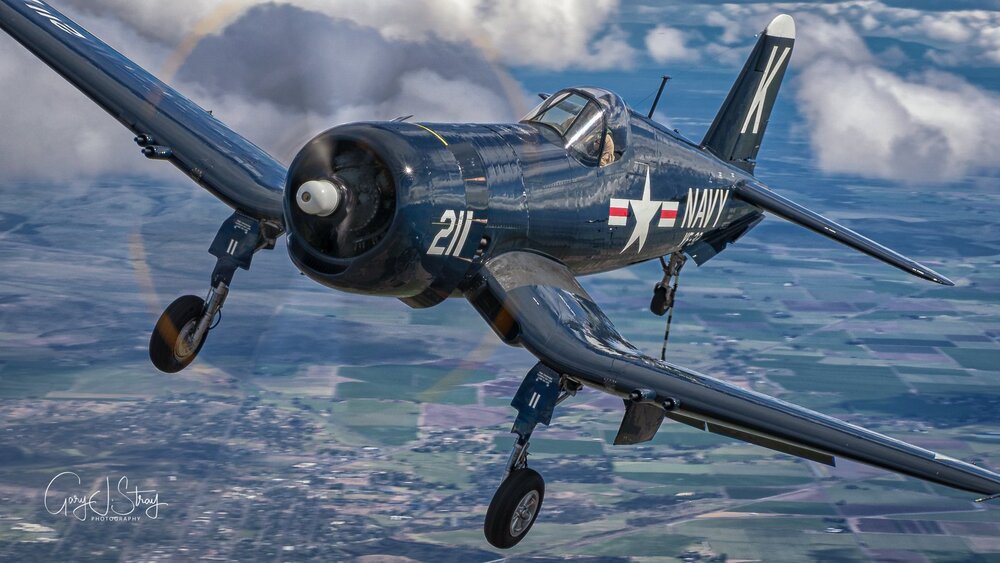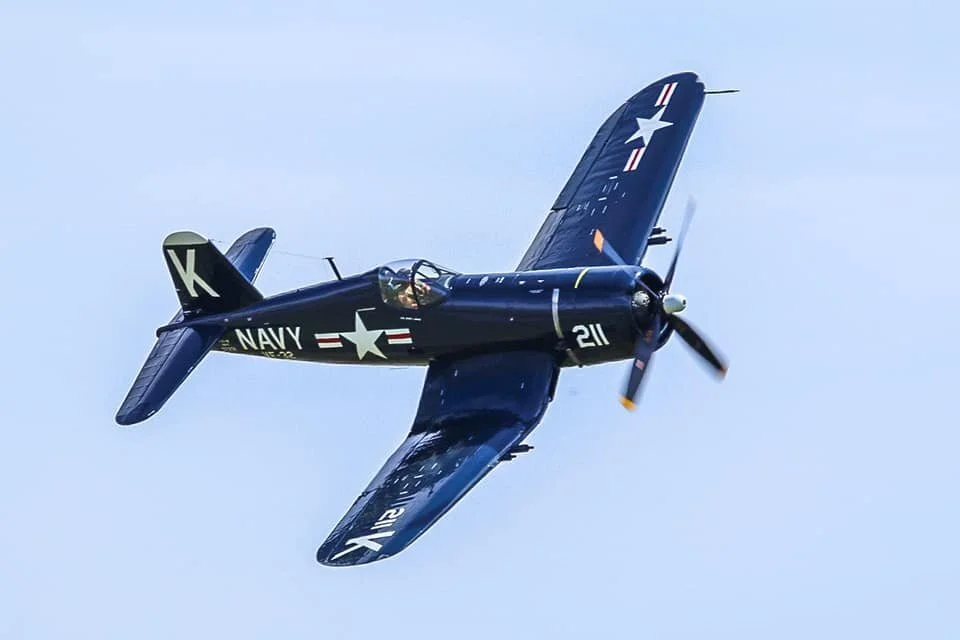VOUGHT F4U-7 CORSAIR
The museum’s Corsair is an F4U-7, one of the rarest surviving variants from the last of 94 built in 1952 exclusively for use by the French Navy. It saw combat in the Indo-China War in 1953-54, the Suez Canal War in 1956 and later in the Algerian War. Taken from combat service in 1963, it was flown to England where reconstruction began in 1974 to include rebuilding extensive damage forward of the firewall and repairs to three bullet holes in the fuselage. Restored to its original French markings with invasion stripes which it sported in the Suez War, it was repainted to the Marines’ colors after its acquisition by the museum in 1994 and recently painted in memory of Jesse Brown, Naval Aviator, the first African-American killed in the Korean War.
Serving mainly in World War II in the Pacific Theater, the F4U Corsair was the finest carrier-based fighter deployed by any navy and became a fast, versatile and deadly performer and perhaps the best of any U.S. fighter in that conflict. Together with the F6F Hellcat, the Corsair was responsible for the destruction of 7,295 enemy aircraft in air-to-air combat and, in downing enemy planes, it achieved a “kill-to-loss” ratio of 11 to one, the highest for any fighter plane of World War II. The Corsair first flew in May 1940 and at 440 mph, it was one of the fastest fighters of the war with a longer range than any of its counterparts in the Japanese fleet, a distinct advantage in the vast Pacific Ocean where it was most active. The most instantly recognizable feature of the Corsair was its inverted “gull wing” which accomplished two purposes: (1) it permitted a shorter landing gear while still allowing a 13-foot propeller, the biggest fitted to a fighter at the time, to clear the ground, and (2) provided aerodynamic benefits for greater streamlining. Because of the distinctive sound made by air passing through the engine’s cooling ducts, the Japanese nicknamed it “Whistling Death.” Much of the Corsair’s long nose was occupied by a single self-sealing fuel tank holding 237 gallons. This feature, together with a cockpit that was set well back along the fuselage in early models caused visibility ahead and down to be poor and contributed to the aircraft’s initial carrier landing problems and was corrected in later variants. It was not until 1944 when flatter carrier landing techniques were perfected that F4Us were used aboard U.S. Navy carriers in greater numbers, mainly in response to the growing Kamikaze attacks in the Pacific. Before production ended in 1952, the longest production run for a U.S. fighter, a total of 12,571 Corsairs were built.


